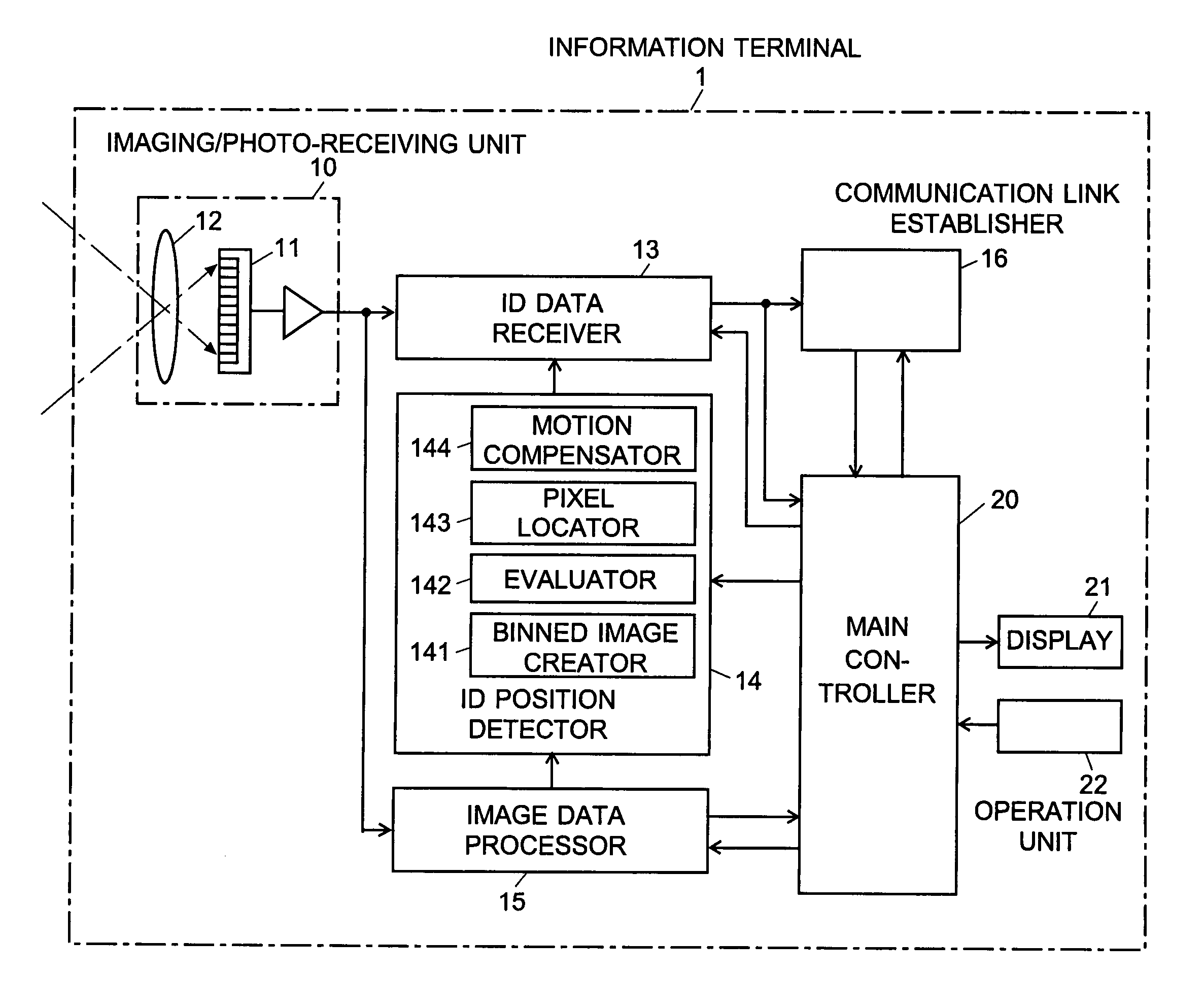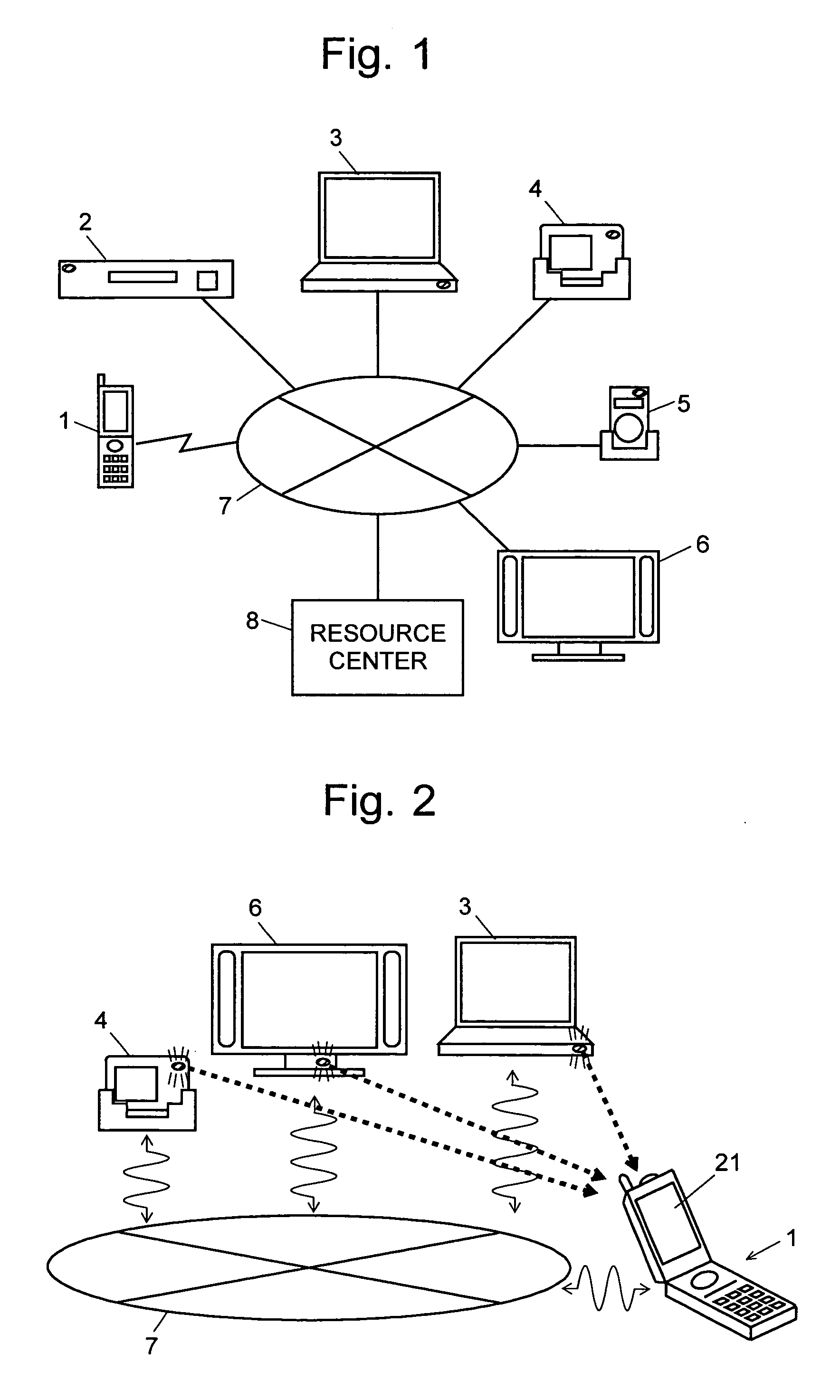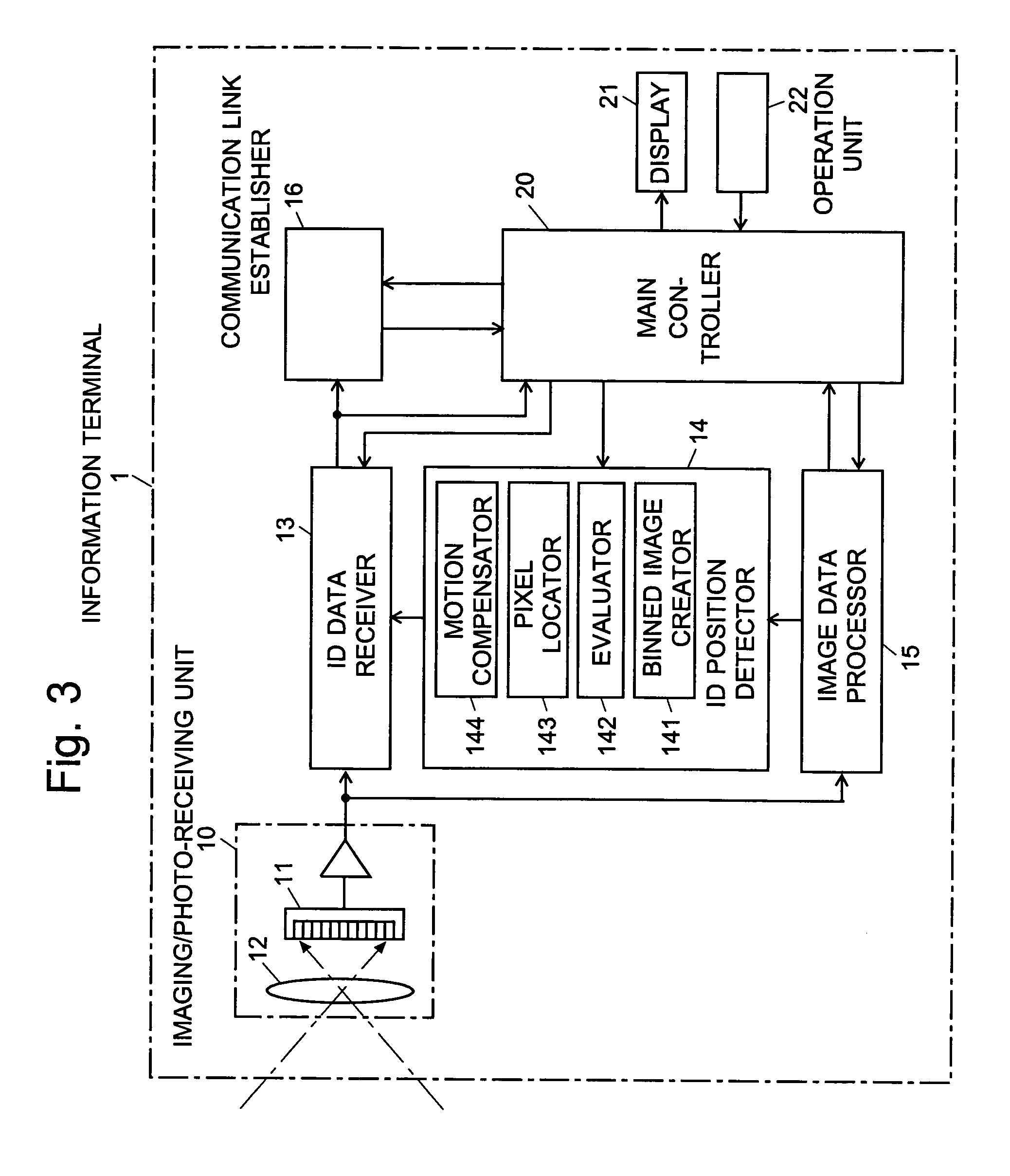Information-processing device and information-processing system
a technology of information processing and information processing, applied in the field of information processing device and information processing system, can solve the problems of no conventional technique proposed to reduce the amount of calculation performed, and many kinds of practical problems to be solved, so as to avoid an increase in the number of bits
- Summary
- Abstract
- Description
- Claims
- Application Information
AI Technical Summary
Benefits of technology
Problems solved by technology
Method used
Image
Examples
example
[0150] This section describes the result of an experiment using a simplified, trial version of the “OPTO-NAVI” system developed by the present inventors and others.
[0151] The trial system used the image sensor disclosed in Non-Patent Document 2 as the image sensor 11 in FIG. 3. This image sensor can simultaneously receive up to seven ID signals (i.e. nID=7) with a frame rate of 1.2 kfps per ID for capturing ID images from which the ID information is to be read out.
[0152] The system also included a camera, which substituted for the information terminal 1 of the remote control system shown in FIG. 2, and three ID transmission modules, which correspond to the information devices. Each transmission module had a red LED as the ID light source, which corresponds to the optical beacon of the information device. The purpose of using the visible light (i.e. red light) was to make the light source easy to handle in the experiment. In practical applications, however, it is desirable to use n...
PUM
 Login to View More
Login to View More Abstract
Description
Claims
Application Information
 Login to View More
Login to View More - R&D
- Intellectual Property
- Life Sciences
- Materials
- Tech Scout
- Unparalleled Data Quality
- Higher Quality Content
- 60% Fewer Hallucinations
Browse by: Latest US Patents, China's latest patents, Technical Efficacy Thesaurus, Application Domain, Technology Topic, Popular Technical Reports.
© 2025 PatSnap. All rights reserved.Legal|Privacy policy|Modern Slavery Act Transparency Statement|Sitemap|About US| Contact US: help@patsnap.com



